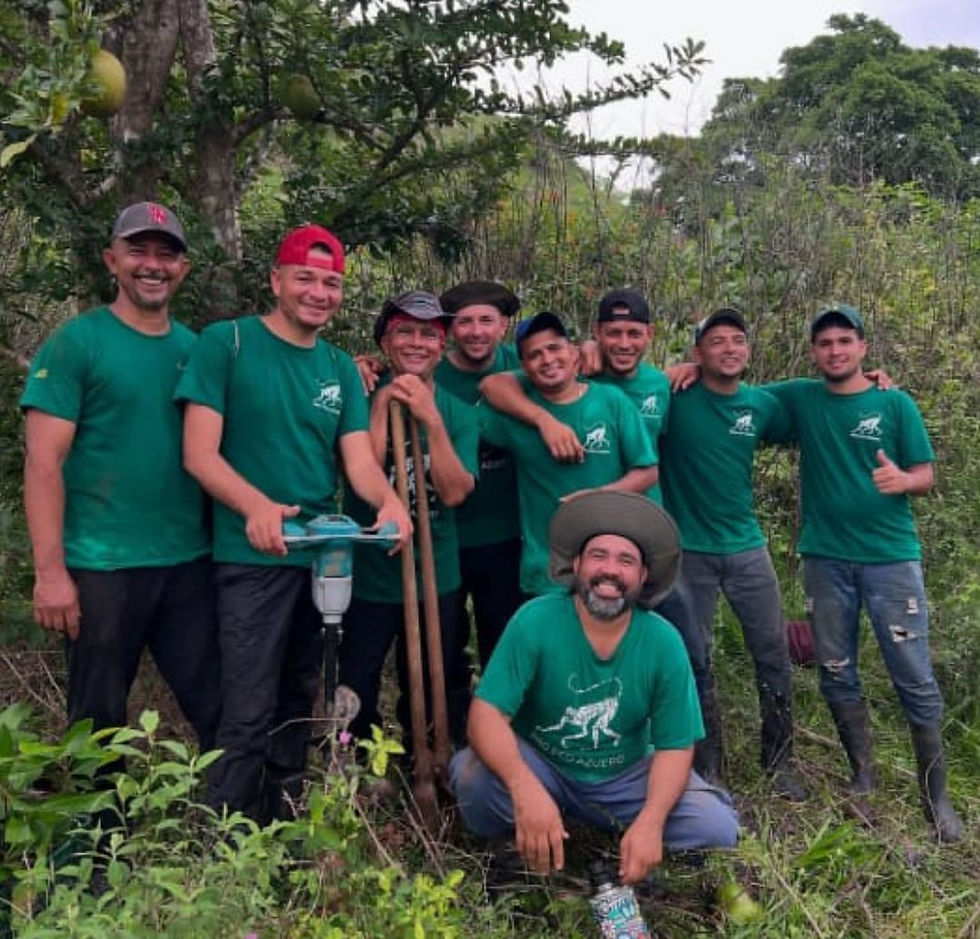Scientist Presents Azuero Spider Monkey Study to Pedasi Community
- Mar 1, 2012
- 2 min read

Natalia Reagan What are the differences between different monkey species on the peninsula? What is the Azuero Spider Monkey and why is this subspecies important? How can we work to save the Azuero spider monkey and other wildlife on the peninsula? These are the questions that Natalia Reagan, master’s degree recipient from California State University Northridge, tackled in her presentation to the Pedasi community on February 25, 2012. In the talk she discussed the Azuero spider monkey study she conducted in 2010 with Jairo Batista (Los Asientos), Heraclio Solis (Los Asientos), and Daniel Essiambre (Canada). It’s really confusing sometimes when you have several species of monkey in one area and they look similar. Both [the Azuero spider monkey and the Azuero howler monkey] are similar in size. You really need to check. Next time you go out there and think you see a “charro” (Azuero spider monkey) make sure to double check. The arms of the spider monkey are really, really, really long. The reason it is called the spider monkey is that it looks kind of like a spider if seen from far away, with very long arms and a fat belly. The howler has a distinct throat gland, its head is more of a slope, and it has a stooped position. The spider monkey, by contrast, brachiates and is more acrobatic. They both have a prehensile tail, meaning that they can pick up things and support their own weight. Howlers eat leaves, and that is why they can find food just about anywhere and it takes longer for them to digest. The Spider Monkey mainly eats fruit, and it is because of this specific diet that they are in such critical danger of extinction. ~ Natalia Reagan During the discussion that followed Natalia’s talk, participants offered their own accounts of seeing spider monkeys on the peninsula, and debated the relative importance of the two main threats to spider monkey existence on the peninsula; habitat destruction and poaching. “In the past, it was fairly common to see spider monkey poaching to keep as pets – you would see them in people’s houses - but now that is very uncommon,” commented Sr. Nicolas Solis, President of the Ranching and Agrosilvopastoral Association of Pedasí. “Monkeys, as much as we like to think that they are cute and adorable, are not good pets,” commented Natalia, “For every pet monkey you see, if it came from the wild, you have to assume that four or five adults were killed to get it, because monkeys, like humans, will fight for their offspring.” Natalia Reagan suggested reforestation of streams with native tree species important to spider monkeys as a key strategy for protecting this uniquely endemic subspecies of spider monkey. Here is a list of key tree species the scientific team found important for spider monkeys in English and Spanish. View Natalia Reagan's presentation








Comments